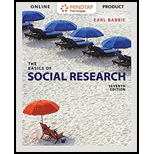
Introduction:
Deductive reasoning goes from the general to the specific. In this case we might predict that less educated people are more prejudiced. This would then be followed by a test of this hypothesis. Inductive reasoning goes from specific to general, and in this case one might evaluate data to see how education and prejudice are related, then suggest reasons why.
Explanation of Solution
Answer and explanation:
(This question requires a subjective response, this is an example.) The relationship between prejudice and education can be addressed from different perspectives. If we start with the hypothesis that less educated people are more prejudiced, then look for evidence to test it, we are using a deductive model. For example, after agreeing on what constitutes prejudice, one could track the education levels of people who are more prejudiced to see if they are lower, as predicted. If we wanted to use inductive methods instead, we would begin by analyzing data to see if education level is correlated to level of prejudice to determine the relationship, then look for reasons why this relationship exists.
Want to see more full solutions like this?
Chapter 2 Solutions
BASICS OF SOCIAL RESEARCH,ENHANCED (LL)
- I’ve been thinking about how different philosophers view the idea of the “self.” Between Plato and Aristotle, are there any beliefs about the self that you personally connect with or disagree with? How do their views compare to your own experience or perspective on identity? Some things to consider might be: Do you think we’re born with a set “essence” that shapes who we are (like the avocado view), or are we more shaped by our experiences, environment, and choices (like the artichoke view)? Or do you lean more toward the idea that there’s no fixed or separate self at all, like some non-Western philosophies suggest? How much do you think things like race, gender, class, or sexuality influence who we are? Do you believe gender identity is biologically fixed, or something more fluid and shaped by individual experience?arrow_forwardSeveral movies and television shows have portrayed individuals with special needs. Watch and review one of these films or television shows. Based on your readings and coursework, do you think the portrayals are accurate? Why or why not? What other reflections do you have after watching the movie/show? Suggested films/shows: Tim Of Mice and Men Nell Forrest Gump The Other Sister Memory Keeper’s Daughter The Good Doctor (show) The Theory of Everything Temple Grandin Peanut Butter Falcon Atypical CODA The Elephant Man Finding Nemo I Am Sam Rain Man You are not limited to these options! Feel free to choose another movie/show with characters with special needs that may be of interest to you. - Include a short summary of the movie/show, a description of the character with special needs, and your reflections from watching the movie/show.arrow_forwardwhat are some concepts from the video: Understand blockchain in under 7 minutes: Don Tapscott with Lloyds Bank https://www.youtube.com/watch?v=isuAPyuqS7Y and how does it impact the future from a societal perspectivearrow_forward
- How to explain to a school system that you live in your current address when they are accusing you of living elsewhere and when proof of residency has already been submitted?arrow_forwardHow to explain to a school system that you live in your current address when they are accusing you of living elsewhere?arrow_forwardIn the video: "How Schools Kill Creativity" https://www.ted.com/talks/sir_ken_robinson_do_schools_kill_creativity What are 2 ideas that Ken Robinson mentioned that can impact the future of educationarrow_forward
- Step 1: Find 2 news articles about a topic with opposing viewpoints that is of interest to you. You will provide the links in your submission. Step 2: Provide an article (link or copy paste) into ChatGPT, Perplexity Al, or other generative Al platform, and ask it to analyze the article using Burke's Pentad. You can ask it to use the questions below. What are some notable language choices? What is said about the agent (who did it, what kind of person are they)? What is said about agency (by what means or with what instrument was it done)? • How is the act described (what was done)? • • • • Is there any mention of the scene (where/when/what was happening during this time)? What is being implied or stated as the purpose (why was it done)? Considering the choices regarding language, agent, agency, act, and scene, what does the article/report seem to suggest caused or motivated the act? Optional: Do you see a particular ratio being advanced? Step 3: Repeat the process for a second article…arrow_forwardPhilosophical inquiry often raises questions about what it means to truly understand something. One important concept in this area is dialectic, a method of dialogue that encourages deep thinking and challenges assumptions. This is especially clear in Socratic conversations, which tend to stand out from ordinary talk because they focus less on winning an argument and more on uncovering the truth. The Socratic Method often centers on everyday beliefs—things people assume without questioning—and works by asking probing questions that reveal contradictions or gaps in understanding. In works like Meno and The Republic, the difference between knowledge and opinion becomes a central theme, especially in how Socrates guides others to realize what they do or don’t actually know. This also ties into a bigger question: is it even possible to know anything for certain? Can people ever reach perfect wisdom, especially when it comes to big, abstract ideas like justice, virtue, or truth? Some…arrow_forwardHow do the philosophical differences between conservatives and liberals influence policy debates on healthcare, education, and welfare?arrow_forward
- What are the constitutional foundations and competing philosophies of economic and social policy?arrow_forwardIs the Constitution’s flexibility a strength in our current polarized environment, or is it starting to create more gridlock than progress?arrow_forwardAfter watching a 15 minute clip by educational YouTuber CGP Grey describing how agriculture, industry and information have changed due to automation, Indicate 3 ways this video could change someones perspective on the future https://www.youtube.com/watch?v=7Pq-S557XQU&t=1sarrow_forward
 Social Psychology (10th Edition)SociologyISBN:9780134641287Author:Elliot Aronson, Timothy D. Wilson, Robin M. Akert, Samuel R. SommersPublisher:Pearson College Div
Social Psychology (10th Edition)SociologyISBN:9780134641287Author:Elliot Aronson, Timothy D. Wilson, Robin M. Akert, Samuel R. SommersPublisher:Pearson College Div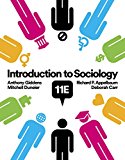 Introduction to Sociology (Eleventh Edition)SociologyISBN:9780393639407Author:Deborah Carr, Anthony Giddens, Mitchell Duneier, Richard P. AppelbaumPublisher:W. W. Norton & Company
Introduction to Sociology (Eleventh Edition)SociologyISBN:9780393639407Author:Deborah Carr, Anthony Giddens, Mitchell Duneier, Richard P. AppelbaumPublisher:W. W. Norton & Company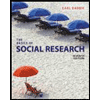 The Basics of Social Research (MindTap Course Lis...SociologyISBN:9781305503076Author:Earl R. BabbiePublisher:Cengage Learning
The Basics of Social Research (MindTap Course Lis...SociologyISBN:9781305503076Author:Earl R. BabbiePublisher:Cengage Learning Criminalistics: An Introduction to Forensic Scien...SociologyISBN:9780134477596Author:Saferstein, RichardPublisher:PEARSON
Criminalistics: An Introduction to Forensic Scien...SociologyISBN:9780134477596Author:Saferstein, RichardPublisher:PEARSON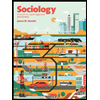 Sociology: A Down-to-Earth Approach (13th Edition)SociologyISBN:9780134205571Author:James M. HenslinPublisher:PEARSON
Sociology: A Down-to-Earth Approach (13th Edition)SociologyISBN:9780134205571Author:James M. HenslinPublisher:PEARSON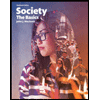 Society: The Basics (14th Edition)SociologyISBN:9780134206325Author:John J. MacionisPublisher:PEARSON
Society: The Basics (14th Edition)SociologyISBN:9780134206325Author:John J. MacionisPublisher:PEARSON





